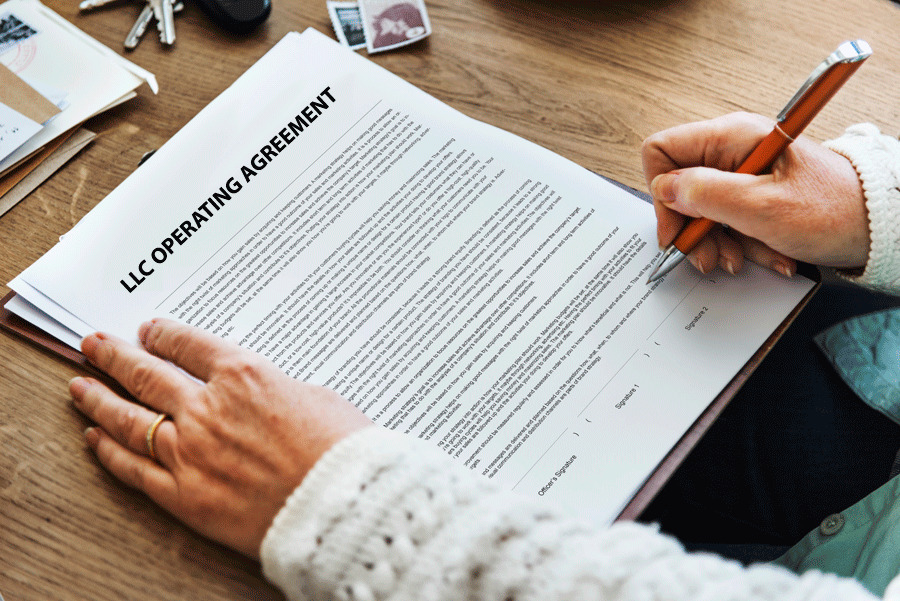A Confidentiality Statement also referred to as a non-disclosure agreement or NDA, is a legally enforceable contract that establishes confidentiality between two parties, i.e., the party disclosing the protected information and the recipient of that information.
A confidentiality statement is usually signed when the disclosing party wants the receiving party to treat any information made available to them as confidential, such as trade secrets, recipes, personal information, events, technical data and designs, sales leads, and customer or client data, financial information, inventions and product ideas, etc.
By signing the confidentiality statement, the receiving party agrees not only not to share or disclose the information disclosed to them but also not to release, copy, modify or use the information in any other way not authorized by the disclosing party.
Confidentiality statements are usually signed by only one party, i.e., the receiving party unless both parties in the agreement disclose information to one another that they would like to be kept confidential.
Free Templates
Following are some free downloadable templates for you:
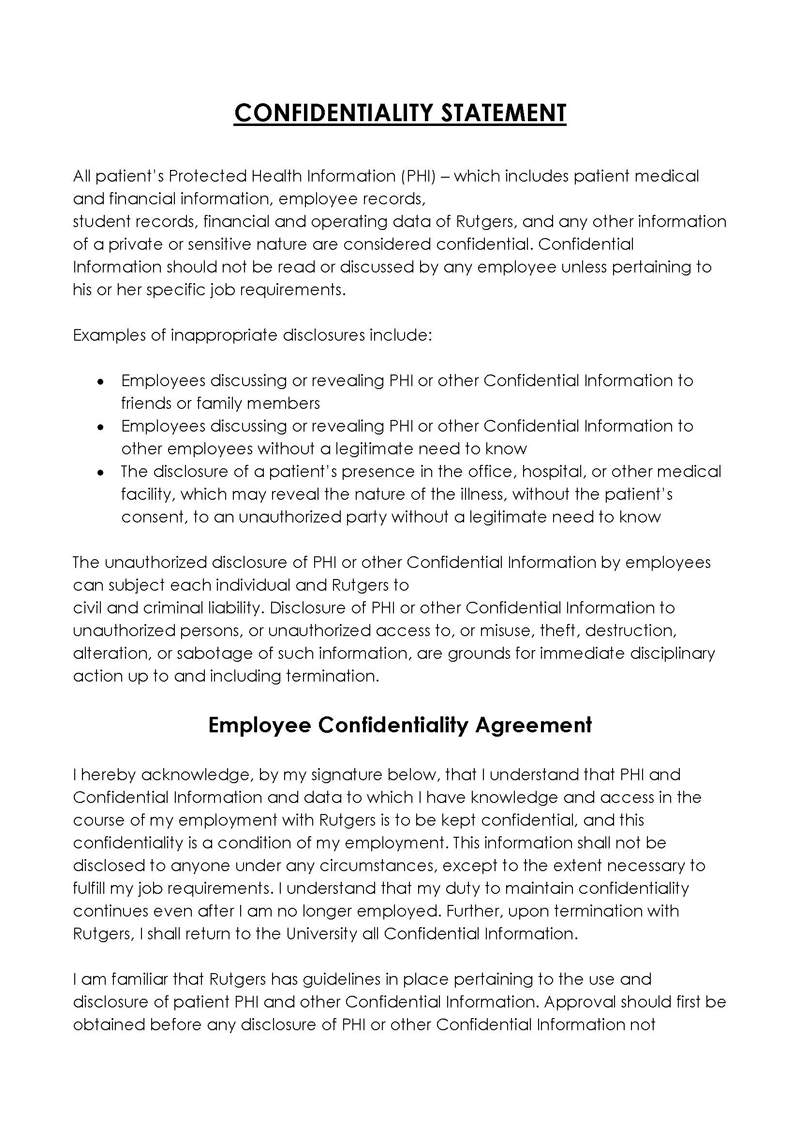
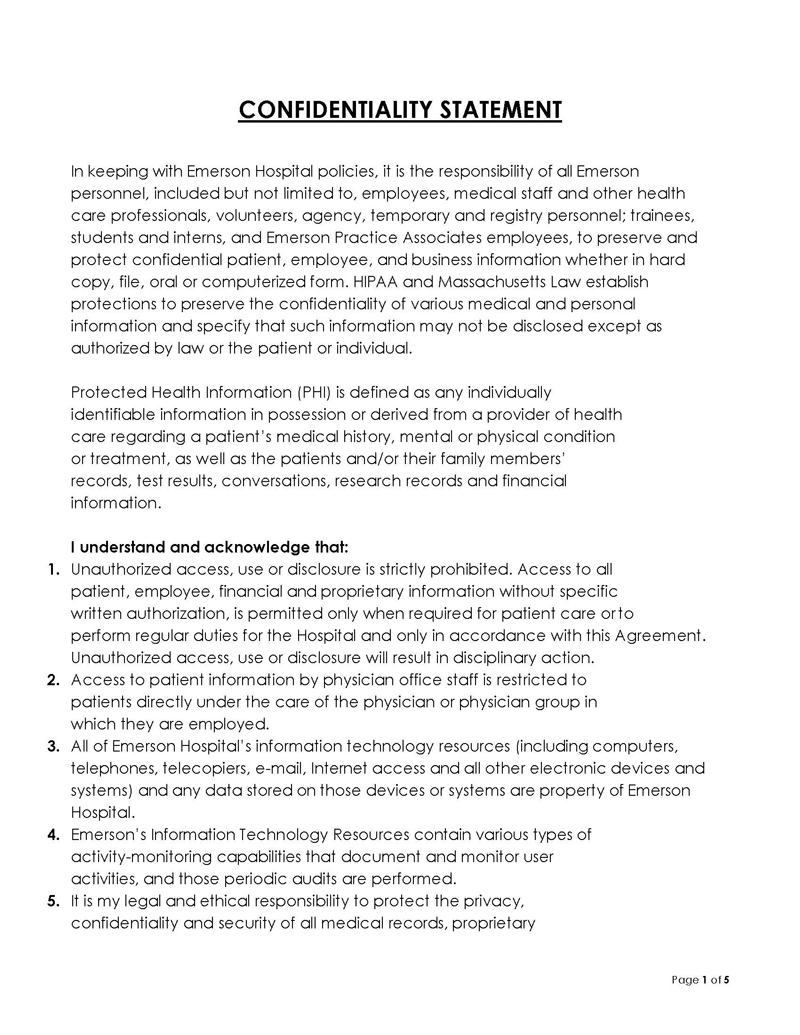
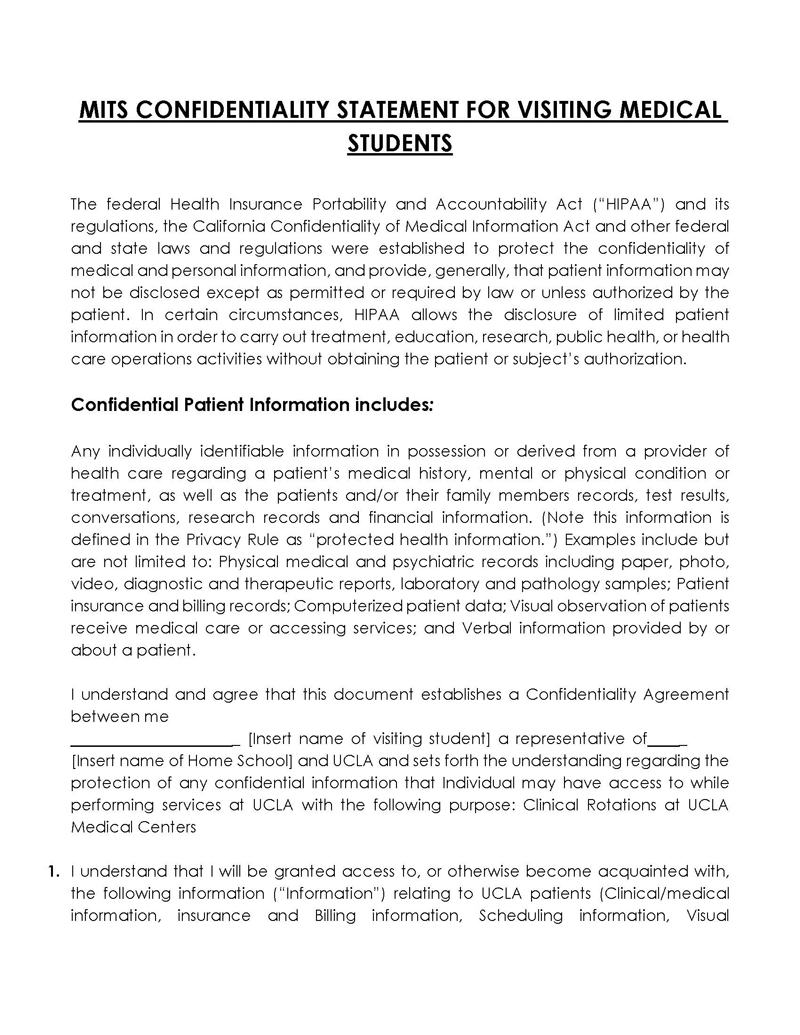
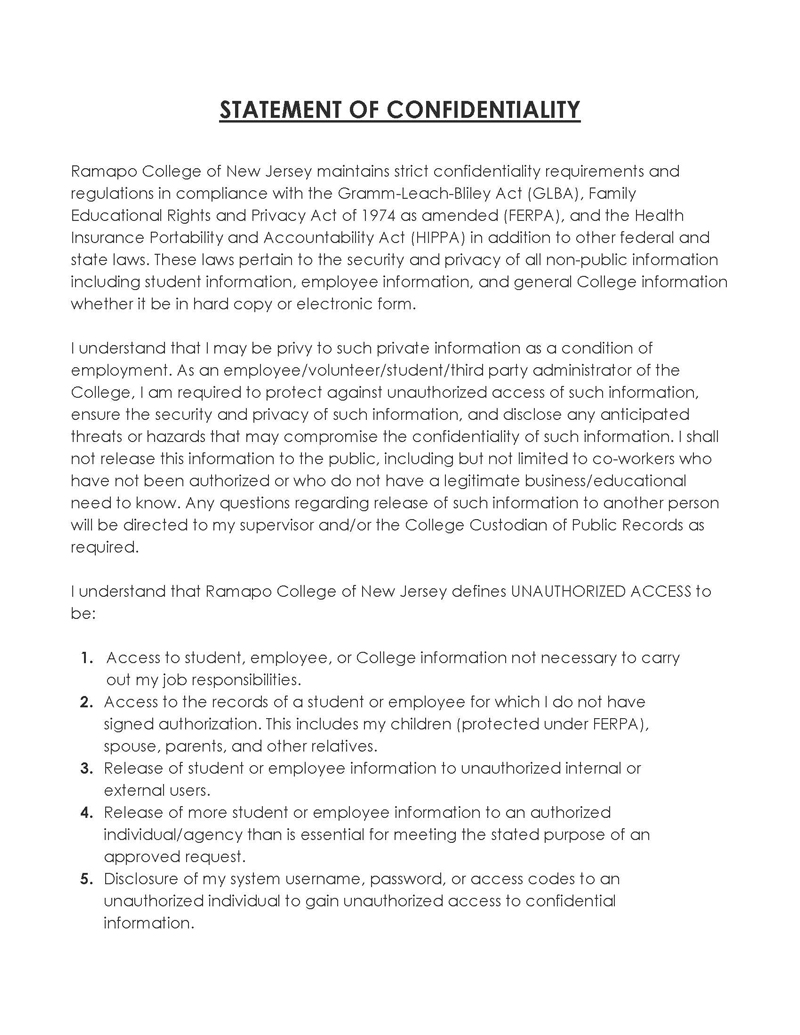
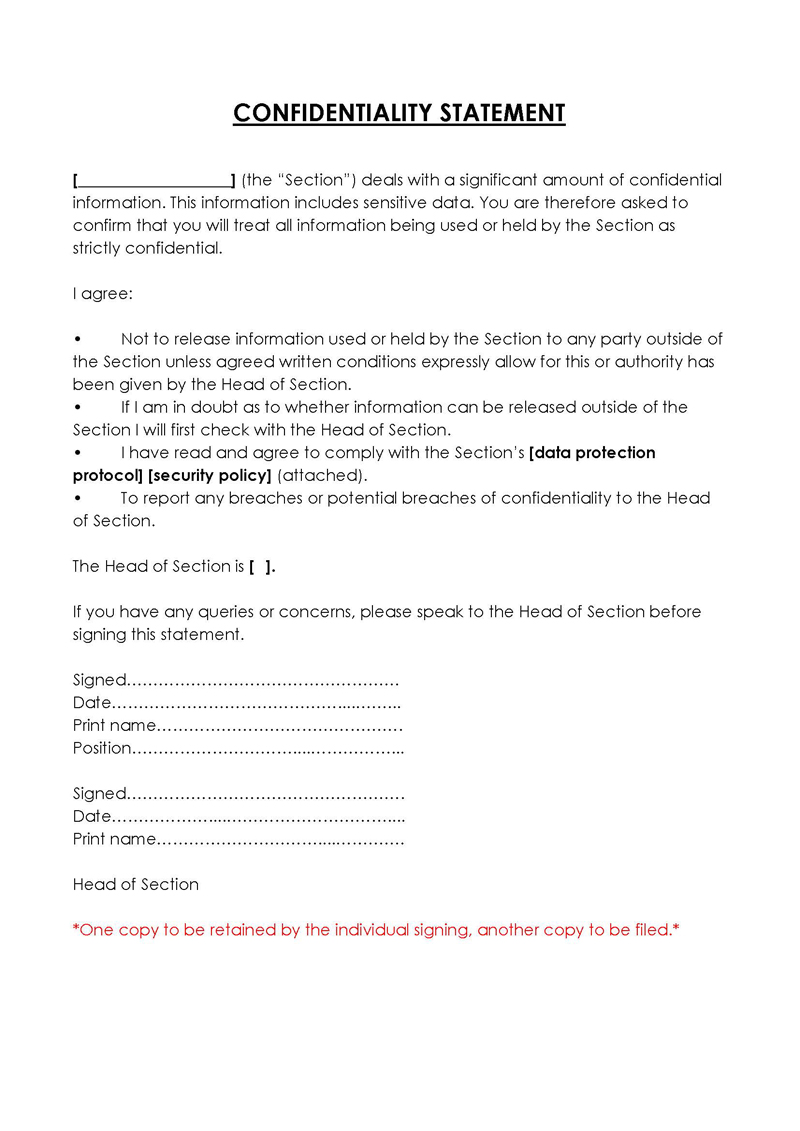
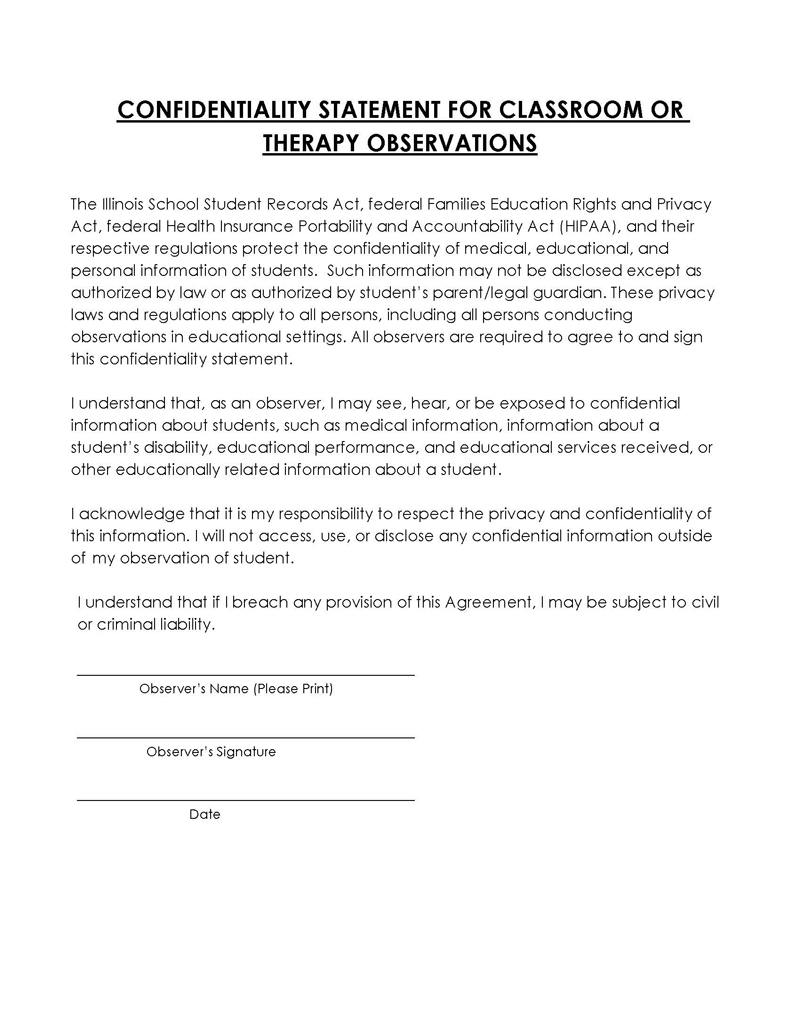
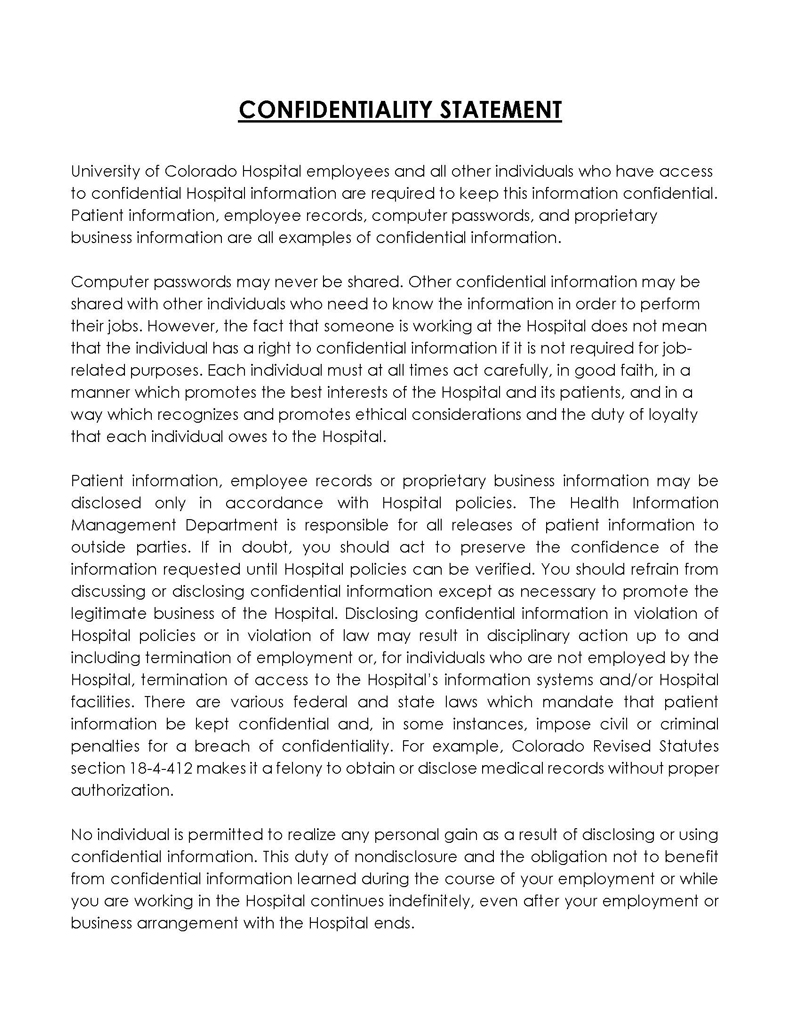
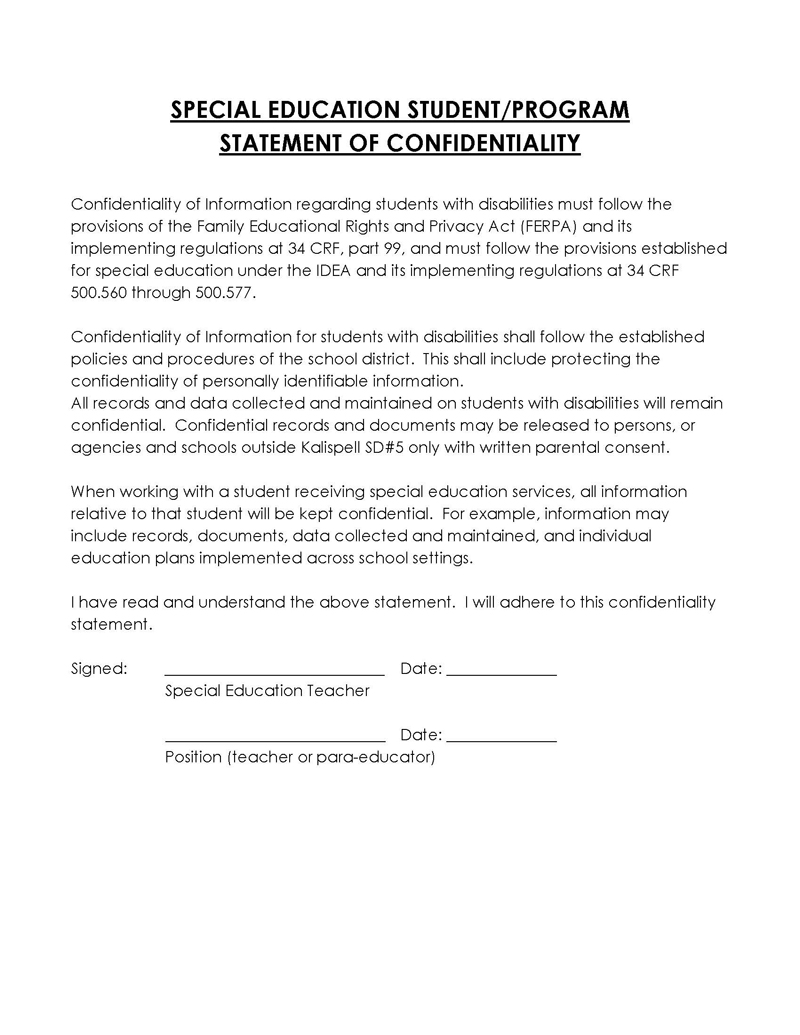
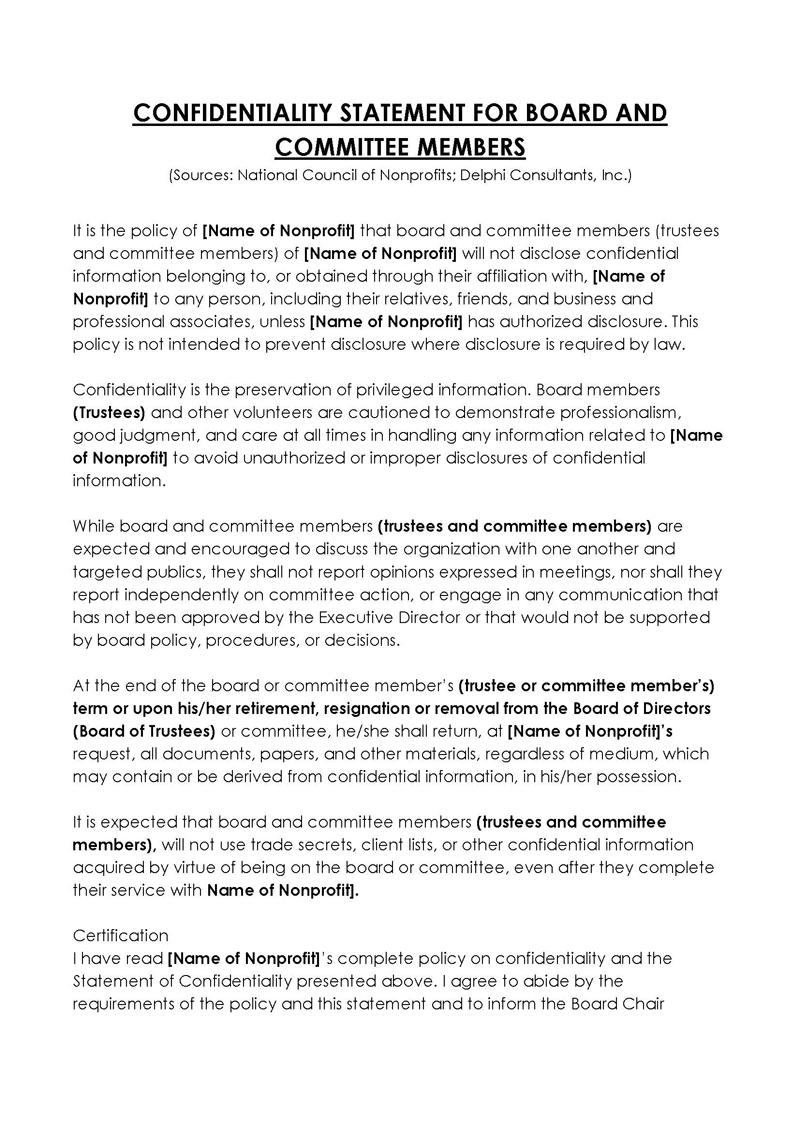
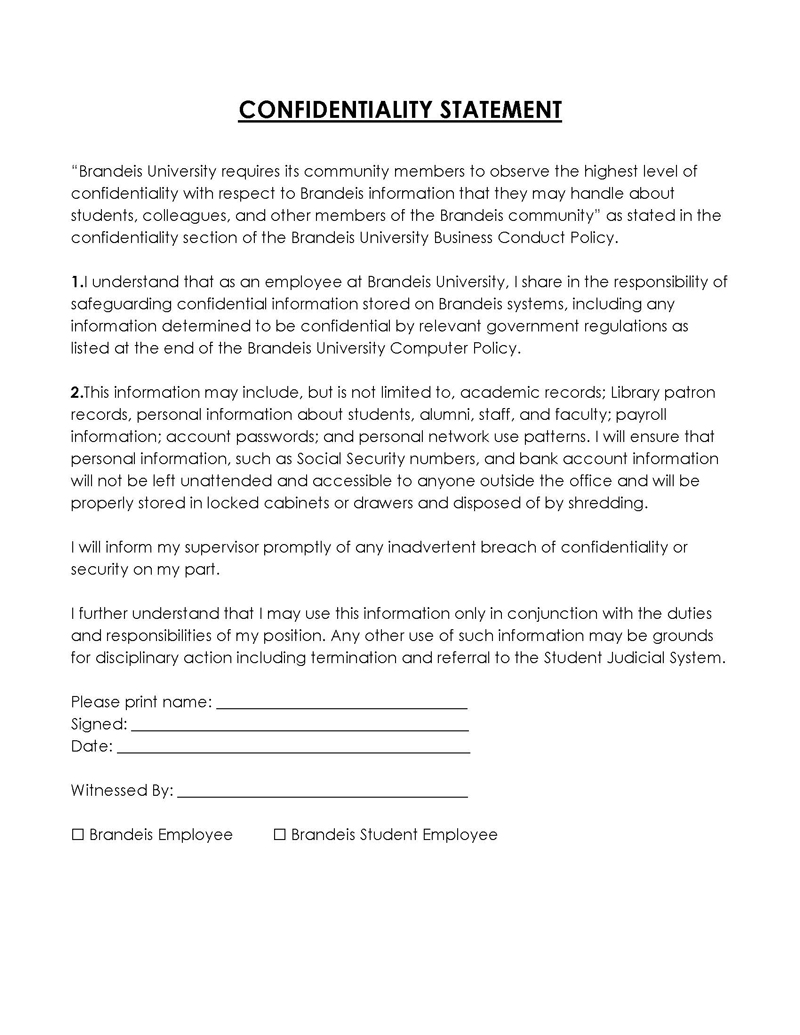
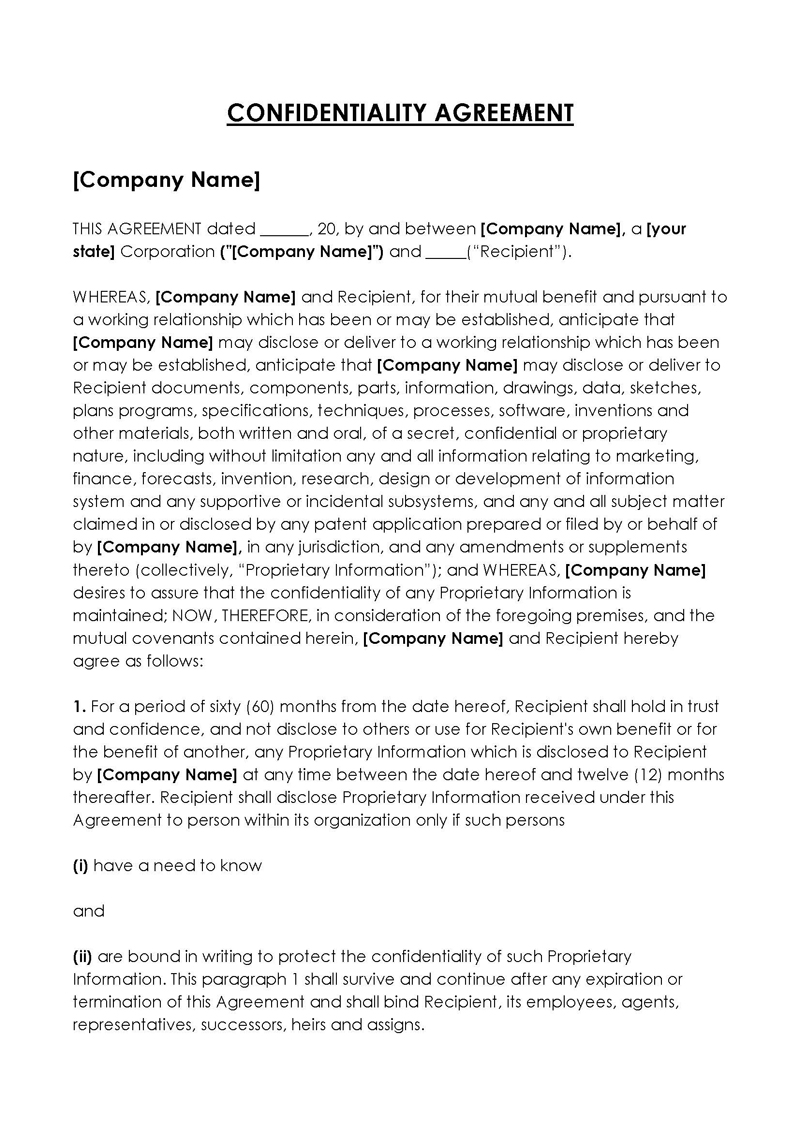
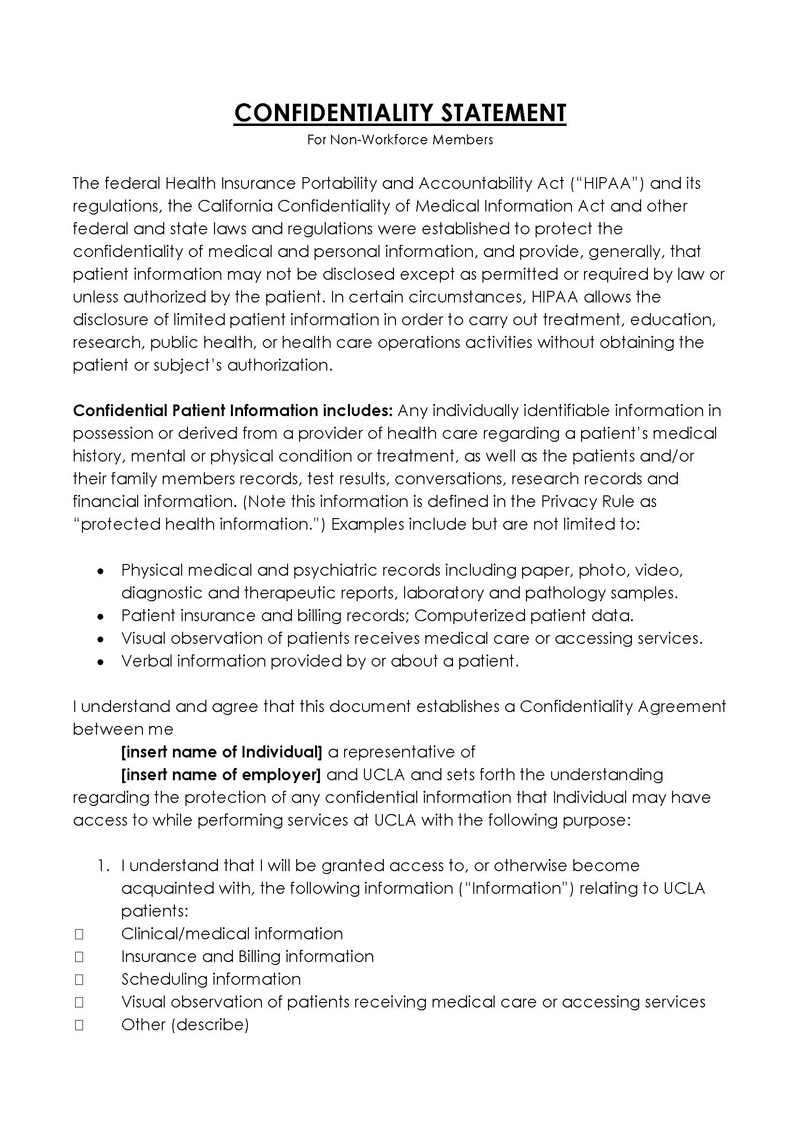
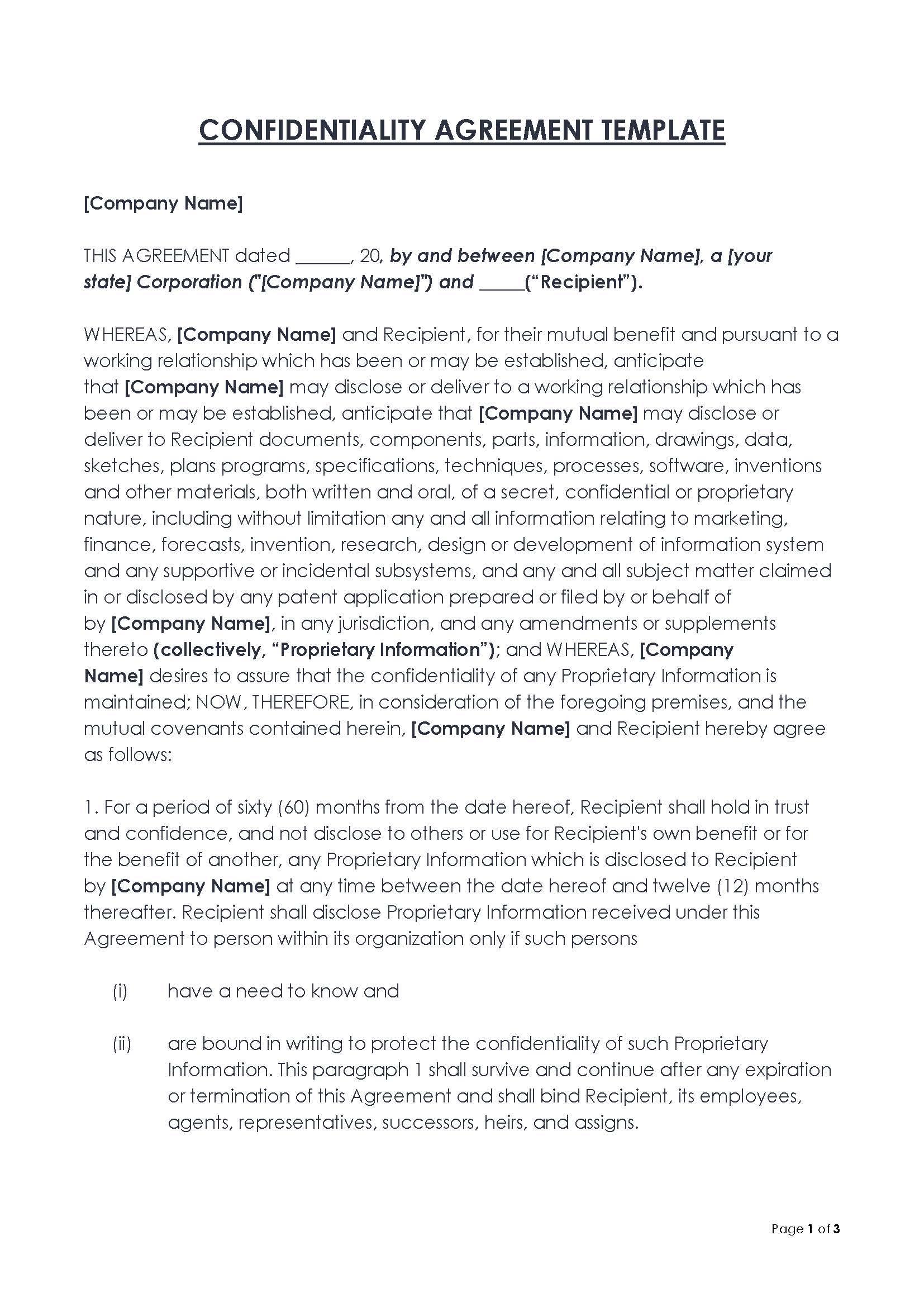
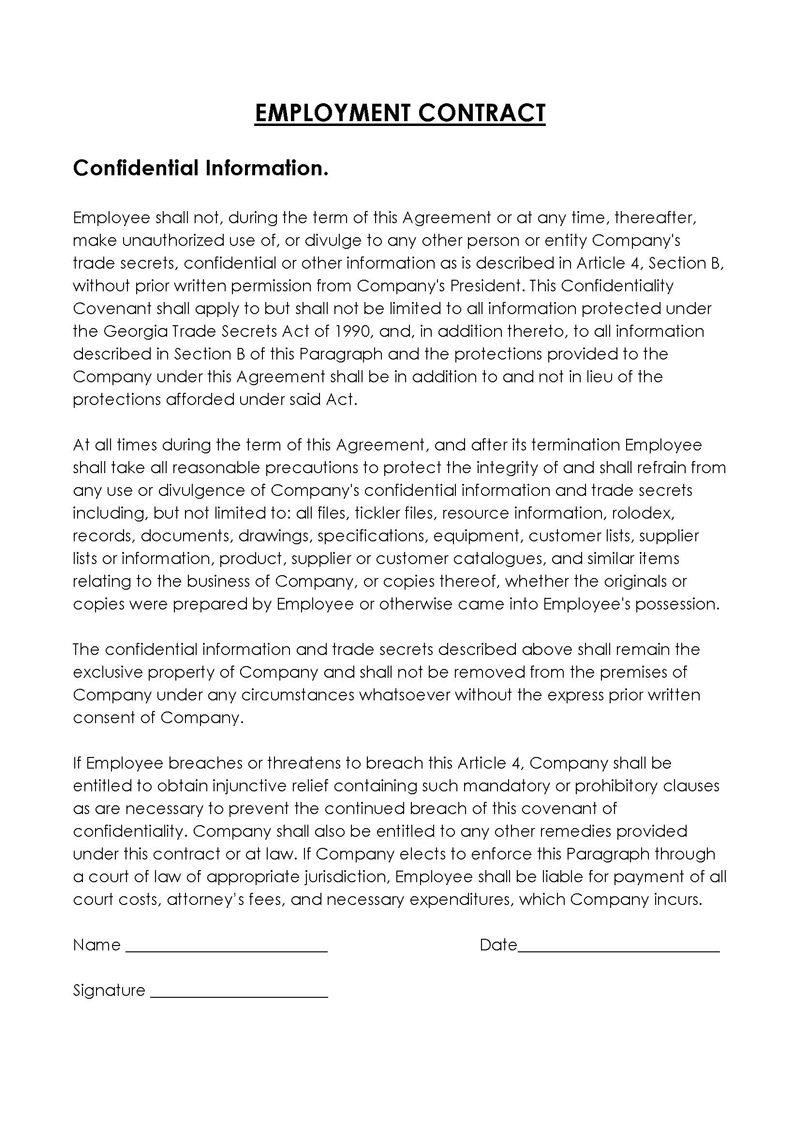
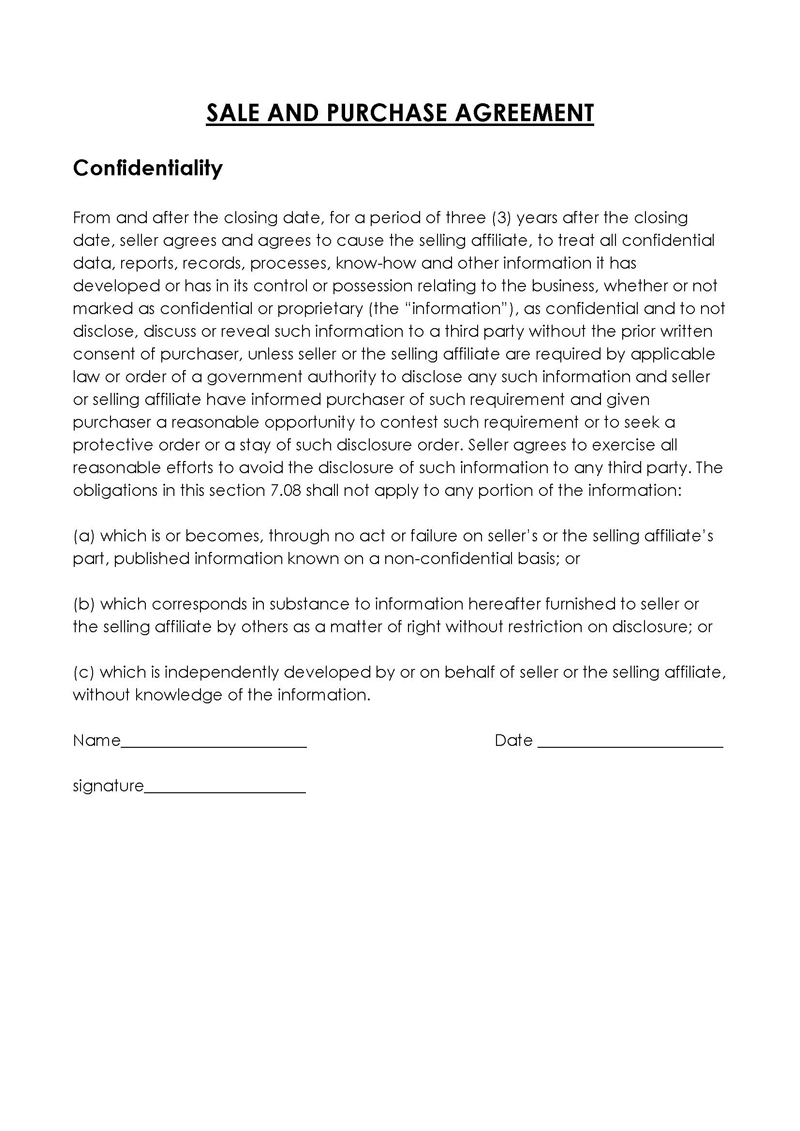
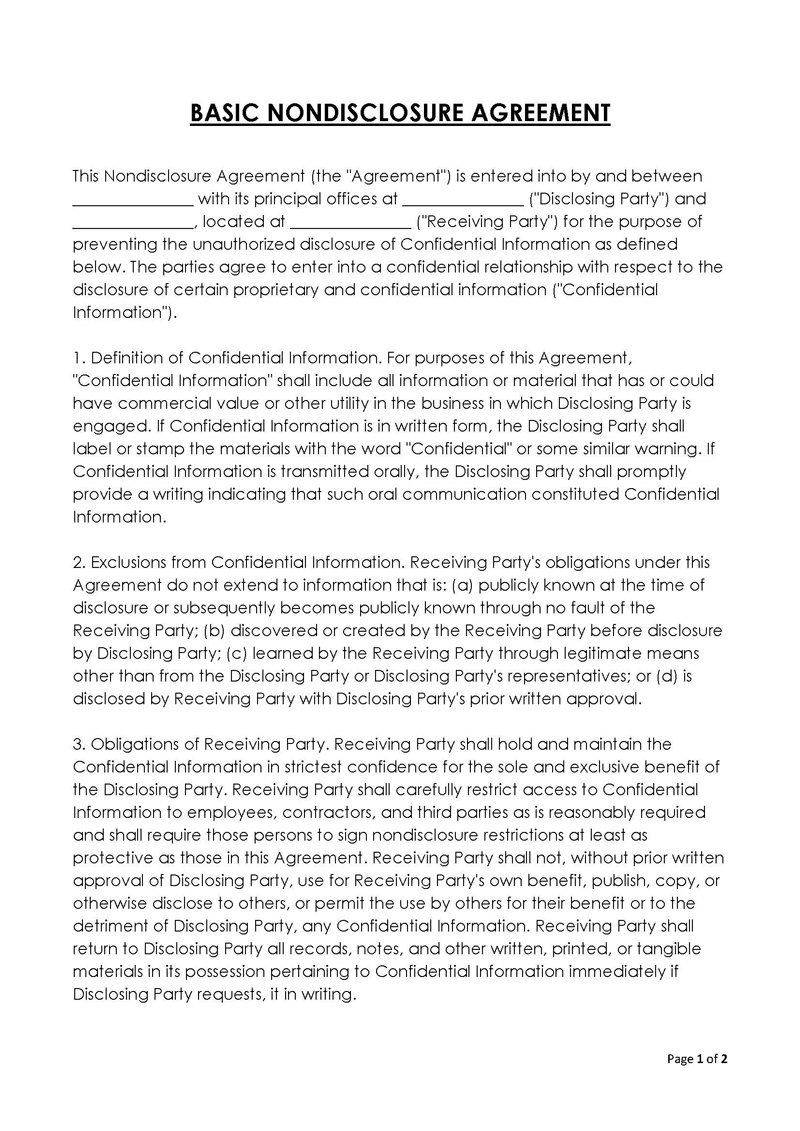
What to Include in a Confidentiality Statement
The type of information included in a confidentiality statement usually depends on the type of information being disclosed.
However, for the agreement to be legally binding, there is some information that must be captured in the agreement, including:
Parties information
A confidentiality statement should identify the parties involved and define their roles in the agreement. The name, job title, address, or other identifying information should be included in the agreement. This clause should also define the disclosing party and the receiving party. It should also be stated that the receiving party is liable for any loss of revenue or damages that may result from sharing confidential information with other parties that are not included in the agreement.
The context for the agreement
A reason as to why the confidentiality statement is being used should be included in the document.
For example:
If an employee will be able to access any confidential information and their employer would like for such information to be kept confidential, they may state the reason for using the confidential information in this clause.
Confidential information
The confidential information clause should define what is meant to be kept confidential. A clear and complete description of what is to be considered confidential, including the title, shape, color, or any other distinctive characteristics of what is to be deemed confidential, should be included. Additionally, the confidentiality statement should state whether the receiving party will receive the confidential agreement in writing, electronically, or verbally.
In most cases, only written content will be deemed confidential. However, the disclosing party may want the receiving party to treat any verbal communication between them as confidential. To do this, they must specifically inform the receiving party in writing that such information must be kept confidential.
Exclusions from confidential information
A confidentiality statement should specify any exclusions from confidentiality and describe how the receiving party can disclose the confidential information. Under this provision, the confidentiality statement should specify any exclusions from confidentiality treatment. Ideally, this provision seeks to address situations where it would be virtually impossible for the receiving party to keep the information confidential.
Some of the reasons that may warrant exclusion from confidentiality include:
- If the information that is to be deemed as confidential is already in the public domain
- If the receiving party acquires the information before signing the confidentiality statement
- If the “confidential information” has already been disclosed to the receiving party without the disclosing party’s consent
- When the receiving party has been issued by court order and is bound by law to release the information
- When the confidentiality statement was established to aid in the sale of a property- the receiving party may have to disclose certain confidential information to aid in the sale of such properties.
Duration of the agreement
The duration for which the confidentiality statement is valid should be well defined in the agreement. In most cases, the duration/validity of the confidentiality statement will depend on the type of information being disclosed.
Relationships
The relationship between the parties in the agreement needs to be defined in the agreement.
For example:
The contract may state that the agreement shall or shall not be deemed to constitute either party as a partner, employee of the other party, or a joint venture.
Restrictions, if any
The disclosing party will want to prevent the receiving party from using the information disclosed to them for monetary gains or sharing it with other unauthorized parties. They may also want to prohibit the receiving party from replicating, distributing, or retaining the information after it has been disclosed to them.
Security of disclosed information
The receiving party is required to protect the information given to them from accidental or unintended disclosure.
For example:
If they have written copies of information that should be kept confidential, they should ensure that they keep such records in a safe place.
They may also be required to return copies given to them or destroy them after a specified period.
Solicitation of employees
This clause aims at preventing either party from soliciting or hiring employees from the other during or after the duration of the agreement.
For example:
If the receiving party is aware that by using the information the disclosing party has given them and acquiring the disclosing party’s employees, they may be able to compete against them, then this provision will prohibit them from soliciting or hiring the disclosing party’s employees.
Penalties or remedies for breach of contract
The confidentiality statement should have a provision specifying the consequences for the breach of the agreement. If the receiving party breaches the confidential agreement, then the disclosing party is entitled to have its remedy at law in equity. Such remedies may include; injunctions, attorney fees, income loss, and other monetary damages.
Waiver
A severability and no-waiver provisions are usually included to prevent lawful loopholes from voiding the agreement’s enforceability. A no-waiver provision is usually included to extend the duration in which the parties can file a suit in the event of a breach of contract.
Miscellaneous
Other miscellaneous provisions that may be included in the confidentiality statement include:
Jurisdiction
The laws and courts that will handle any disputes. This provision should specify that if either party files a dispute in court, then the court’s jurisdiction is where the disclosing party is located or the one specified in the agreement.
Arbitration clause
This provision sets the grounds for settling any dispute out of court. It gives the parties an option to have arbitrators present during the settling of the dispute.
Signature
The confidentiality statement should categorically state who is responsible for signing the agreement.
For example:
If the disclosing party has a registered business, then the executive directors or manager of that business will be the ones to sign the agreement.
The agreement should also specify if the confidentiality statement should be jointly or solo signed.
In addition to the parties required to sign the agreement, it should also specify if the parties should sign it before or after the confidential information has been disclosed.
Key Takeaways
Here are important key takeaways that you should consider:
- A confidentiality statement, also referred to as a non-disclosure agreement or NDA, is a legally enforceable contract that establishes confidentiality between two parties, i.e., the party disclosing the protected information and the recipient of that information.
- A confidentiality statement can be used to prevent disclosure of confidential information such as trade secrets, recipes, personal information, events, technical data and designs, sales leads and customer or client data, financial information, inventions and product ideas, etc.
- Anyone who has access to any confidential information should sign a confidentiality statement form to prevent them from disclosing any confidential information that may cause harm to the organization.



